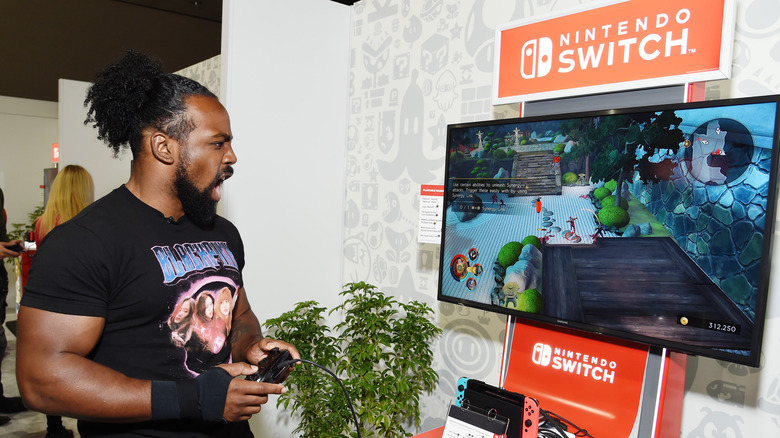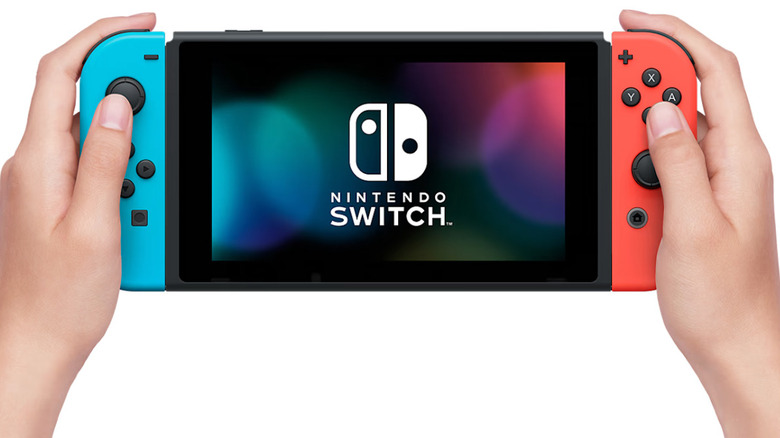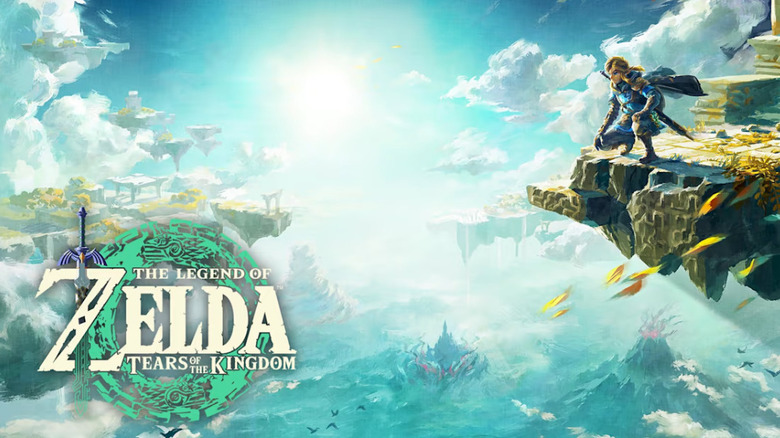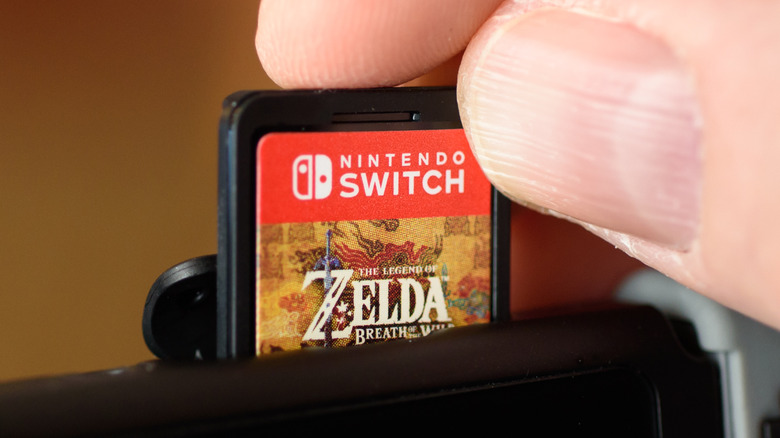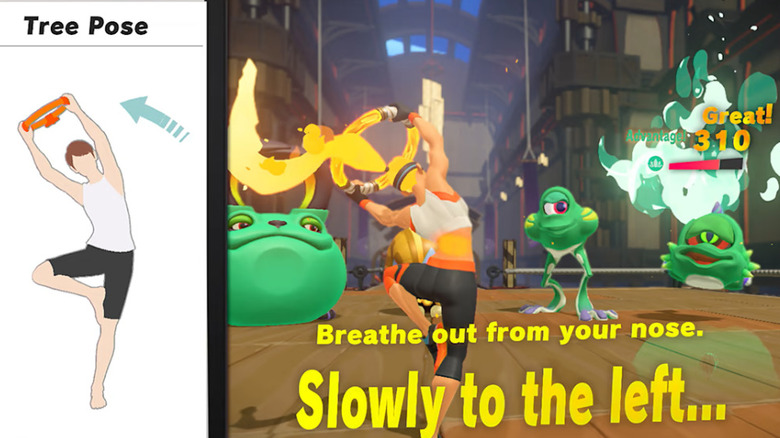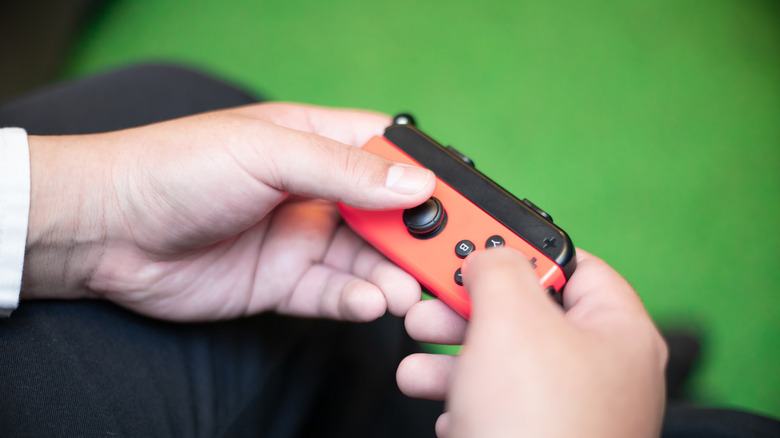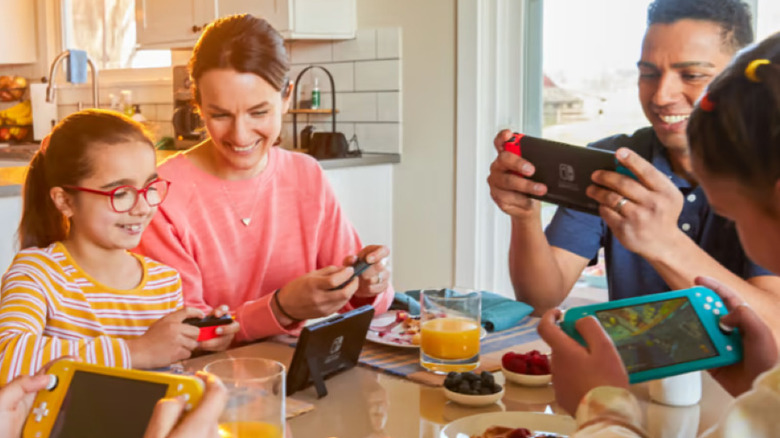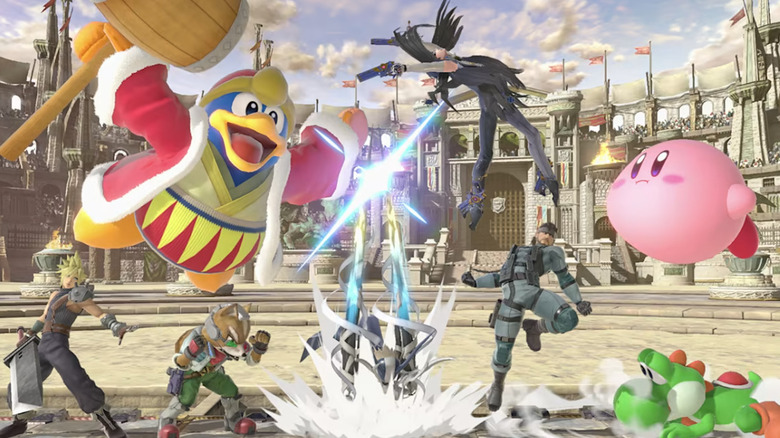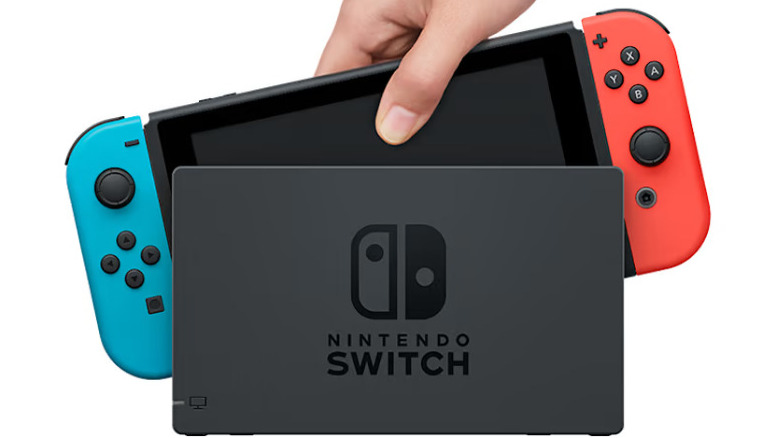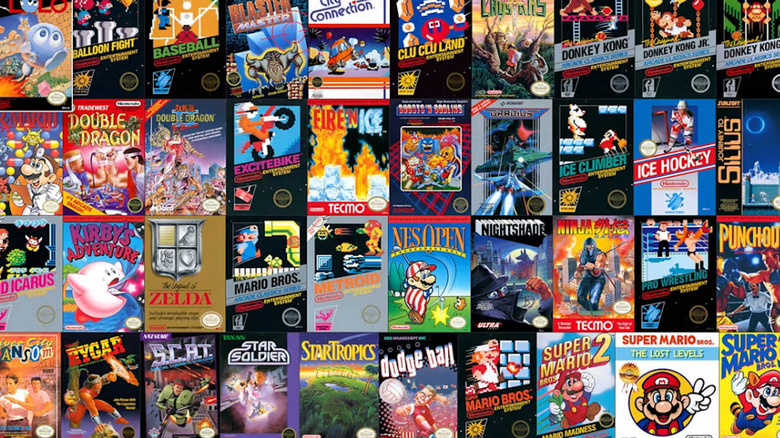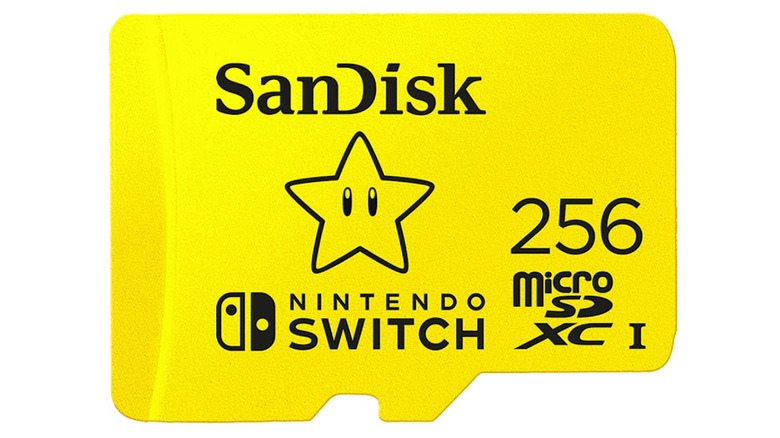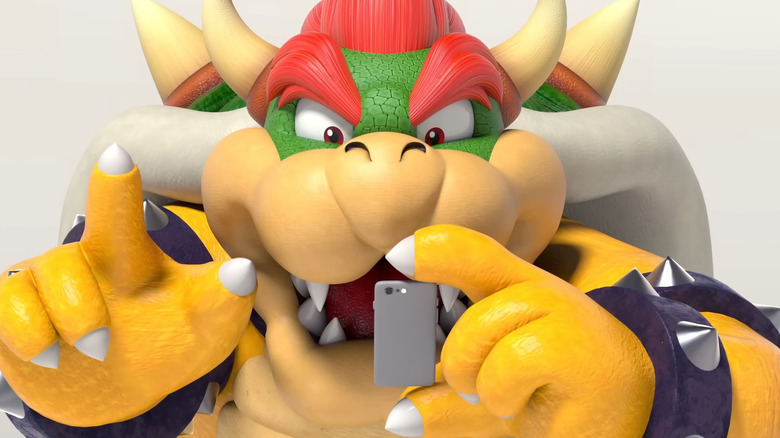Things That The Nintendo Switch Can Do That Xbox And PlayStation Can't
The Nintendo Switch is in a class of its own. While the system is considered a generation behind both Microsoft's Xbox Series X/S consoles and Sony's PlayStation 5, it has held its own as another unique Nintendo platform, much like the DS or Wii before it. It isn't the graphical powerhouse that either of its competitors are, but it doesn't need to be — this is a system lauded for its portability, its ease of use, and its affordability, while still offering three different versions of the console — basic, lite, and a nicely upgraded OLED console. It also happens to be the third best-selling console of all time, recently passing the Game Boy's lifetime sales of 118.69 units, per VGChartz. At 118.99 million units sold as of December of 2022, Nintendo's little console has only the Nintendo DS and PlayStation 2 ahead of it.
How did this strange hybrid manage to do so well, and how is it still considered direct competition for both Sony and Microsoft's cutting-edge consoles? The answer doesn't lie in what it can't do as well as its competitors, but what it can do that they cannot. The singular design of the Switch, as well as Nintendo's philosophy as a company, gives it several advantages over its powerful, but more traditional, rivals.
The Switch is still the only truly portable console gaming experience
The most obvious edge Nintendo's console has over the Xbox or PlayStation is its portability. The Switch is the only full console experience that can travel with you throughout the day when a game really gets its hooks into you. It can easily move from your home, to public transit, to lunch breaks, and back home at the end of the day. A reasonably good battery life, paired with attached controllers so a carrying case or backpack isn't required, makes Nintendo's console the easy choice for gaming on the go.
Both Microsoft and Sony have started to implement a workaround to allow for a slightly more portable experience: cloud gaming. By using the home console's processing power, and connecting a secondary device like a tablet, laptop, or phone via the internet, one can access their digital library and enjoy a slightly downgraded home console experience on the road. However, that method still requires a secondary device, a controller, and an internet connection, not to mention having to sacrifice phone battery life to squeeze in another round of "Fortnite." While the recently introduced Steam Deck is intriguing, and cloud gaming is far superior to buying a $300 case with a monitor to carry an Xbox or PS5 around, the Nintendo Switch remains the best option for full-featured, easy-to-use portable gaming.
The House that Mario built earned that name with beloved console exclusives
Every generation has its exclusives, and Sony and Microsoft always have at least one or two series that they can tout another iteration of for an upcoming console release. Sony has names like "God of War," "Gran Turismo," and "The Last of Us." Microsoft responds with "Halo," "Gears of War," and "Forza," along with its ever-expanding catalog of games from Microsoft-owned third-party studios like Bethesda. While those are strong titles, if there's one thing the Switch features that the Xbox Series S/X and PlayStation 5 don't, it's Nintendo's lineup of the most iconic gaming franchises of all time.
A company that could easily continue to be successful without ever launching another console, the big N has so many iconic characters and series that, according to a 2020 survey by GamesIndustry.biz, 60% of PS4 owners also had a Switch, and 51% of Xbox One owners had one as well. While portable gaming is one likely reason for those numbers, another is the sheer volume of games only accessible on Nintendo's console. Iconic franchises featuring beloved heroes like Link, Mario, and Samus call the Switch home, and new exclusives "The Legend of Zelda: Tears of the Kingdom" and the long-anticipated fourth "Metroid Prime" keep gamers coming back to Nintendo. In fact, Nintendo is so good at building around those heroes that even spinoffs become bestsellers. Toad, once a consolation prize for finishing a castle in 1985's "Super Mario Brothers," is now featured in nearly every Mario-branded release, and even has his own "Treasure Tracker" games. Put simply, while Microsoft and Sony make series, Nintendo creates legacies.
Lightning-fast loading of physical games
It's no secret that the Nintendo Switch is the "little brother" to current consoles from Sony and Microsoft in terms of power. The Switch, designed with portability and ease of use in mind, simply doesn't have the room for monstrous processors like the Xbox Series S/X or PS5. Those systems are basically designed to compete with one another, and one-upmanship is key to marketing the Xbox and PlayStation to gamers. Disc-based media goes hand-in-hand with that idea. Although consoles and gamers are moving away from physical media, the Series X and PS5 still both feature Blu-ray drives for those buyers not ready to go all-digital. With that medium comes one of the more frustrating features of console gaming — the dreaded install wait. In order to process the information from those discs more efficiently, consoles require installation of data, frequently asking for nearly an hour of wait time and several gigs of memory.
Nintendo's decision to stick with cartridge-based gaming came with the benefit of incredibly quick load times to start a game. The little card clicks into the system, and installation of a new game only takes a matter of minutes. Nintendo's console also rarely requires the long update process the Xbox or PlayStation does when a new patch is released. That's something a player who just wants to jump into a game they haven't played in a while on the other consoles might have to put an hour aside for before they even get to a title screen.
The Joy-Cons facilitate fun, innovative motion controls
The idea of motion controls has been around for years, but it was Nintendo's Wii that revolutionized the concept. Over 100 million Wii units were sold during that console's lifetime, with a quarter of those sales happening in 2009 alone. News stories aired featuring the Wii in retirement homes and hospitals, and families all over the world were reintroduced to gaming by way of their little "Mii" avatars and bowling simulators. Sony and Microsoft dipped their toes into the motion gaming market with the Move controllers and the Kinect, respectively. While those peripherals showed some promise, they never really caught on the way the Wiimote did. Current generation motion controls are even more limited. The PS5's DualSense wireless controller has built-in motion controls, but the games that use them are few and far between. "Horizon: Forbidden West" and "Fortnite" are examples, both using the feature for alternate camera and aiming options. Microsoft has all but abandoned motion controls.
It's the Switch that still brings innovation to the table, featuring motion control in a variety of ways. "Breath of the Wild" features a unique gyroscopic aiming system when the console is used in handheld mode, accurate but not intrusive. The Joy-Cons' small size makes them perfect for the unique fighting game "Arms," but they also work well for driving in "Mario Kart 8" and for countless activities in games like "Super Mario Party," "1-2-Switch," and "Nintendo Switch Sports." Nintendo even encourages players to get off the couch with fitness-focused games "Ring Fit Adventure," "Just Dance," and "Fitness Boxing," all of which use the handheld Joy-Cons to track users' movements as they move along with the on-screen action.
The Switch provides multiplayer action out of the box
The days when buyers would expect more than a single controller and a cable to connect a console to their TV are long past. The original Nintendo Entertainment Center included two controllers and "Super Mario Bros." at launch — a pack-in bonus of around $140 based on today's average price for a new game and controller. Controllers have never been cheap, but they're downright prohibitively priced today, running the same price as a new game for the basic, licensed controller from Microsoft or Sony.
Given the unique nature of the Switch, Nintendo had to include a pair of Joy-Cons with the vanilla and OLED versions of their current-gen console. What they didn't have to do was make those controllers both detachable and usable as standalone peripherals. Straight out of the box, the Switch offers two-player action at no extra charge, no small gift given both costs and, for Xbox in particular, the recent controller shortage. Pair the inclusion of an extra controller for player two with several free demos available for the Switch, and jumping straight into multiplayer with the new console is a cost-free alternative to the other big consoles. As an added bonus, the Joy-Cons even store and charge off the console itself, allowing for a quick game using the console as a shared monitor for two players while they're out and about.
Switch keeps the LAN party vibe alive with local wireless play
Back in the fifth console generation, games like "Command and Conquer: Red" made the jump from PC to the PlayStation. While it was a clunky setup, it was possible to run a two-player game — all one needed was two PlayStations, two televisions, a PlayStation Link Cable, and the two discs included with the game. It was the console version of a LAN party, the local area network setup PC gamers of a certain age remember fondly. With the advent of online gaming, these multiplayer sessions became increasingly rare.
Admittedly, Nintendo has never had the best reputation when it comes to online gaming. However, the Nintendo Switch offers a wireless setup that mirrors the communal atmosphere of LAN parties. With the handheld console able to locally connect with up to seven other Switches, the opportunity to have marathon gaming sessions without having to swap players in and out allows for some great times with friends, as well as opportunities to connect with folks at cafés or other public settings. It's not exactly a LAN party, but the lack of a tripping risk from miles of cables between PCs is reason enough to celebrate.
Keeping couch gaming alive with up to eight players at once
Speaking of that community atmosphere, Nintendo's little console is the only current-generation system to offer simultaneous eight player gaming. Both the Xbox Series S/X and PlayStation 5 cap at half that, with only four players making the cut. This isn't a feature limited to one or two niche products, either. The Switch offers several eight player games in a number of different genres, from competitive racer "Mario Kart 8" to sleepy village simulator "Animal Crossing: New Horizons." As fun as a four-player "MultiVersus" match on PS5 or Xbox is, cramming eight players into a single match of "Super Smash Bros. Ultimate" is absolute mayhem.
The advantage of both the Switch's massive install base and its two packed-in controllers is evident with eight player gaming, as well. Enough people own a Switch that a game night can be arranged easily, and one or two friends bringing their Joy-Cons means spare controllers are available for everyone, especially if you add in the fact that many gamers opt to purchase Nintendo's Pro Controller option as well.
The Switch makes a great second console – or second screen
There are countless times a gamer doesn't have access to the main TV in their home. Maybe the Xbox Series X is hooked up in the living room, and your partner is knee-deep in a rewatch of "The Great British Baking Show." Perhaps the den where the PS5 lives has been taken over by Dad and his buddies watching the NCAA tournament. Either way, when the best monitors in the house are taken over, the gamers in the home are usually the ones to get the short end of the stick.
With the Switch, transitioning to another room is as easy as removing the system from its dock. The sacrifice in screen size is balanced out by the freedom to keep the game going anywhere. The Switch isn't giving you a pared-down version of the game if you aren't playing on a full sized screen, and once that TV has become available again resuming gameplay is simply a matter of popping that Switch back into its dock. If there's a spare TV in the house, hooking up a second dock as a backup is far easier than rewiring your entire console setup for the Xbox or PlayStation. In a 2021 financial briefing, Nintendo reported that roughly 20% of its Switch sales were to households that already owned a Switch, meaning many homes already have access to an extra dock — just keep it hooked up to that spare screen and you're good to go!
Relive your gaming childhood with Nintendo Online + Expansion Pack
For many, a Nintendo console was the beginning of their love affair with video games. Whether you're old enough to remember the global impact of the NES's release back in 1985, or your first experience with a controller was placing proximity mines at the spawn points in the Facility in "Goldeneye 007" for the Nintendo 64, Nintendo's strong back catalog can invoke some great memories that Xbox and Sony simply don't have the history to compete against. While new Nintendo exclusives like "Metroid Prime Remastered" and "Pokémon Scarlet" and "Pokémon Violet" grab the attention of kids and internet writers, the games offered with Nintendo's online service are equally worth getting excited about.
Since launching the Switch Online service in 2018 with 20 classics including "Ghosts 'n Goblins," "Dr. Mario," and "Pro Wrestling," Nintendo now offers over 100 NES games. In addition to that, over 50 Super Nintendo games are available. The announcement of the "Expansion Pack" to the online service added several games originally available on the Nintendo 64, Game Boy, Game Boy Color, Game Boy Advance, and even former rival console Sega Genesis. While Microsoft and Sony offer subscription services Game Pass and PlayStation Now, those services are separate from the Xbox Live and PlayStation Plus subscriptions required for most online multiplayer games. Nintendo not only offers its NES and SNES games along with online multiplayer, but it also throws in cloud storage of save data and the option for a shared family plan for up to eight accounts (for an additional charge).
Memory expansion is as easy as inserting a microSD card
Now more than ever, internal storage is a concern with any gaming console. As game size increased, platform manufacturers Sony, Microsoft, and Nintendo were forced to choose between eating the costs to provide ample storage, or offering expansion at the customers' expense. All three of those companies chose to make the addition of extra memory an option, but only Nintendo didn't require installation of games in the first place.
A Blu-ray based option was never in the cards for the Switch, given its nature as a portable console, but the decision to go with cartridges over discs for physical media gave Nintendo less of a need to include large amounts of internal storage as well. Games run just fine with only a small amount of console memory dedicated to them, due to faster access from a cart than a disc. Both the Xbox Series X/S and PS5 require large amounts of hard drive space for game installation, which adds up after installing three or four AAA titles. Expansion for those systems requires either the addition of a bulky external hard drive or, in the case of the PS5, removal of the system's case to install an internal solid state drive. For the Switch, if memory becomes an issue, expansion simply requires a small microSD card to be inserted into the expansion slot of the system. This is definitely an advantage for tech-averse folks, or the parents of young gamers.
Nintendo remains the standard for parental control over kids' gaming
While not every console gamer is concerned with parental controls, they remain a selling point for moms and dads, especially those who aren't well-versed in gaming systems. Nintendo is well known as the more family-friendly of the big three platforms, and with good reason. The company's first-party catalog is primarily E-rated, brightly-colored fare that is appropriate for all ages. The Joy-Con controllers are a great fit for little hands, and the initial investment in the console is lower than either the Xbox Series X/S or PlayStation 5 consoles. Even the lack of voice communication on the Switch, which many players consider an annoyance, presents itself as more of a feature than a bug for parents worried about the types of online gamers we've all encountered while involved in multiplayer matches.
Parental Controls are featured on the first screen of the Options menu on the Switch, and Nintendo offers a cute video featuring Bowser and Bowser Jr. loaded into the system to introduce parents to the available Switch Parental Controls app, walking them through the many features. That phone app allows parents to monitor what their kids are playing and for how long, as well as the ability to set daily time limits or even suspend software. While PlayStation has parental controls available online, and Xbox does offer a similar app, neither of them makes it as easy as Nintendo does to learn the features and controls available to parents.
